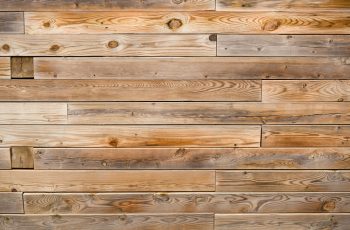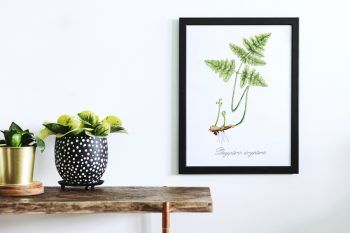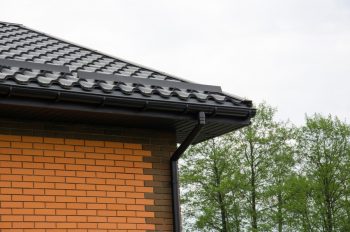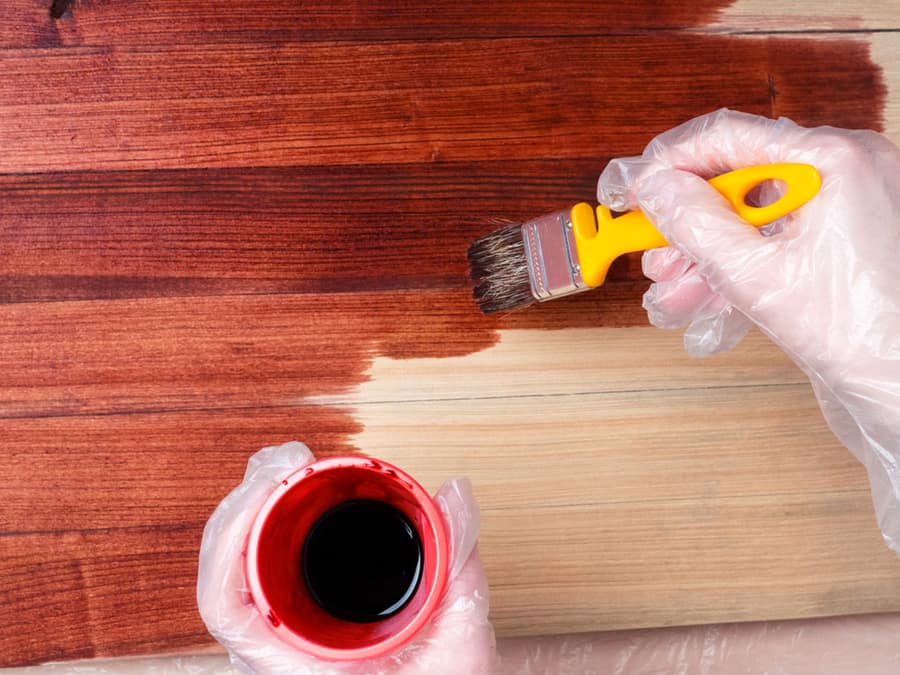
Painting plywood, like painting other types of wood, requires preparation; otherwise, you’d end up with an uneven result. Also, if you don’t choose the correct type of paint, it will affect the quality of the result.
So, how do you get a really good paint finish on plywood?
The goal of getting a good paint finish on plywood is to make the plywood smooth and shining. So to get that smooth and shining result, you must:
- Fill and sand the surface of the plywood.
- Paint as you desire with suitable paint for plywood.
- Seal the surface to prevent staining and splitting.
- Apply polyurethane for protection.
Painting plywood follows the same rules as conventional solid wood. This means that getting the same flush, glossy, premium finish as conventional wood lies in the preparation of the board as opposed to your range of motion, control, or dexterity.
In this article, we will guide you with simple steps to get a really good paint finish on plywood. We’d also share some tips you can use to clean plywood keeping its finish shiny and glossy.
Guide To Get a Really Good Paint Finish on Plywood
The preparation for painting marine or furniture-grade plywood is easy, as these types of plywood are very smooth. However, the less expensive plywood used for roofing, sheathing, or flooring requires more preparation as they have a rougher surface.
Whatever the case, use the following steps to get a really good paint finish on plywood.
Step #1: Fill In the Gaps
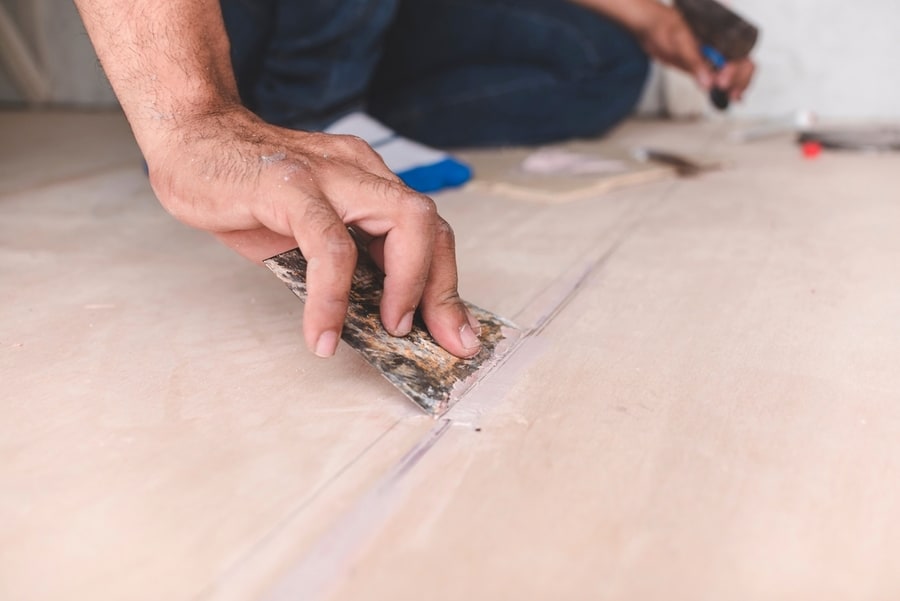
Before you start painting plywood, you should always fill in any gaps, cuts, or recesses. It’s common to find these gaps in wood formed by imperfections or knots on the surface. As such, it is crucial to fill them up always to achieve a smooth surface and finish.
Wood filters are perfect for filling in these gaps. So, apply the filter on these holes with a scraper and a gloved hand.
Smooth the filter over the surface of the plywood so that they are flushed with the face. Give the filters enough time to cure and set before you proceed to the next step.
Step #2: Apply Joint Compound
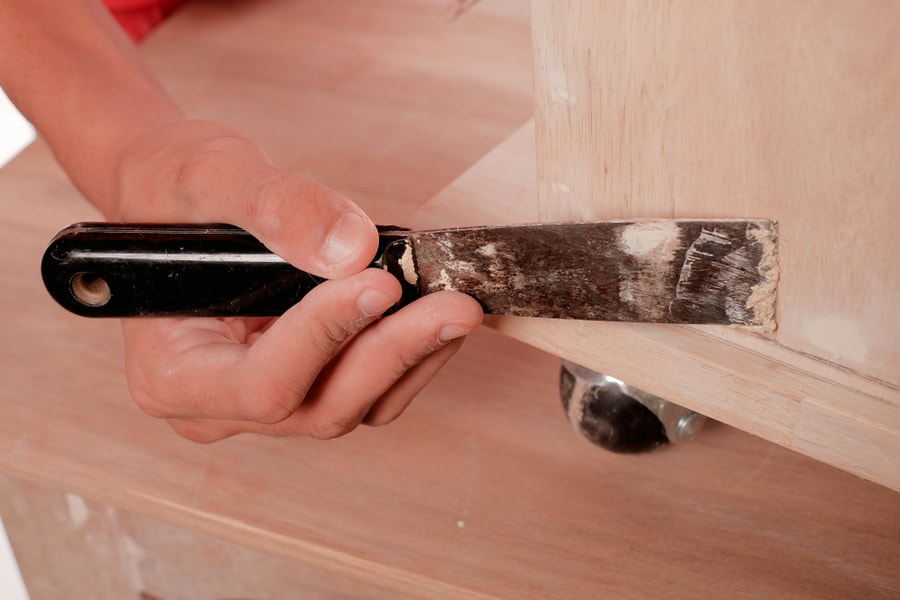
Also, spreading joint compounds over the plywood’s surface is crucial in giving you a perfect paint finish. When you apply the joint compound, try to make it as uniform as possible. Also, ensure that you don’t make the layer of joint compound too thick.
Cover any exposed edge of the plywood with the joint compound. Covering the edges ensures that the edges are smooth and uniform. When you are sure that all the holes and crevices are covered thoroughly, allow the compound to cure and set overnight.
Step #3: Sand the Surface
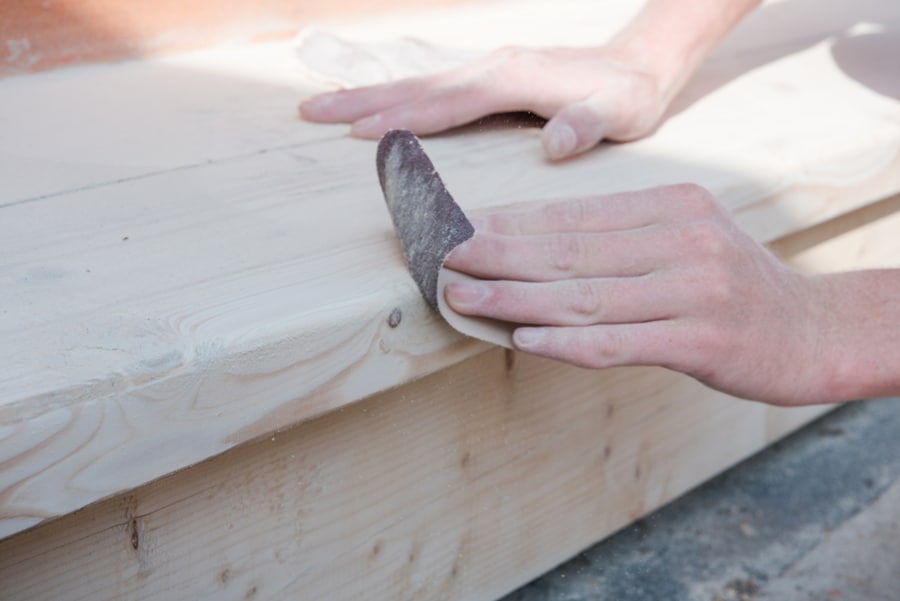
The next step is to sand the surface of the plywood, which is quite messy. So, ensure you take the plywood to a well-ventilated area before sanding.
We recommend using a power sander as you will be sanding a lot. But if you don’t have access to a power sander, you can sand it by hand.
Start sanding the surface with 80-grit sandpaper, which is quite rough and will quickly help you achieve that uniformity. Move to the progressively finer grits of 120 and 220 grits of sandpaper.
If you are working with furniture or marine-grade plywood, start with 120-grit sandpaper since the surface s already smooth.
Step #4: Prime and Sand Again
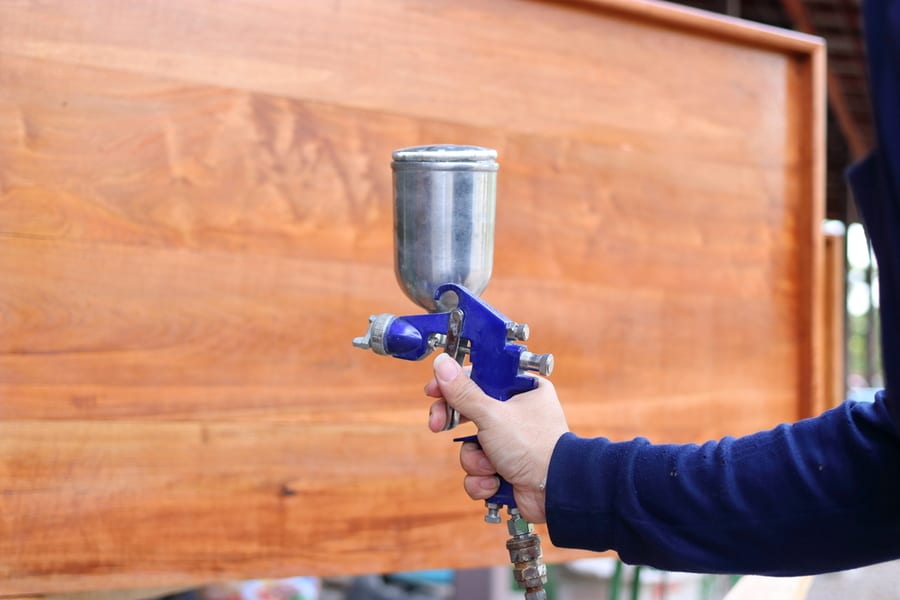
After sanding the plywood properly, apply some primer. You can apply the primer using the old-fashioned bucket and brush or a powered paint sprayer. Using a paint sprayer is easier and gives a more consistent result; both methods work excellently.
When priming, the aim is to apply two really good coats of primer to the plywood. Allow the prime to sit for four to six hours to cure properly. After that, sand down the surface lightly again.
Primer can be toxic when inhaled. So, when working with prime, it is important to wear the appropriate PPE and work in a well-ventilated area.
Step #5: Time To Paint

Whether you are painting by hand or with a sprayer, it is important to clean the sprayer or brush. You should clean it especially if you use the same brush or sprayer with the primer, as it can contaminate your paint, creating distorting effects.
When painting, keep the coats as even as you can. If using a brush, the length and consistency of each brushstroke should be even. Similarly, maintain a consistent trigger pressure throughout the process with a spray gun.
Step #6: Sealing
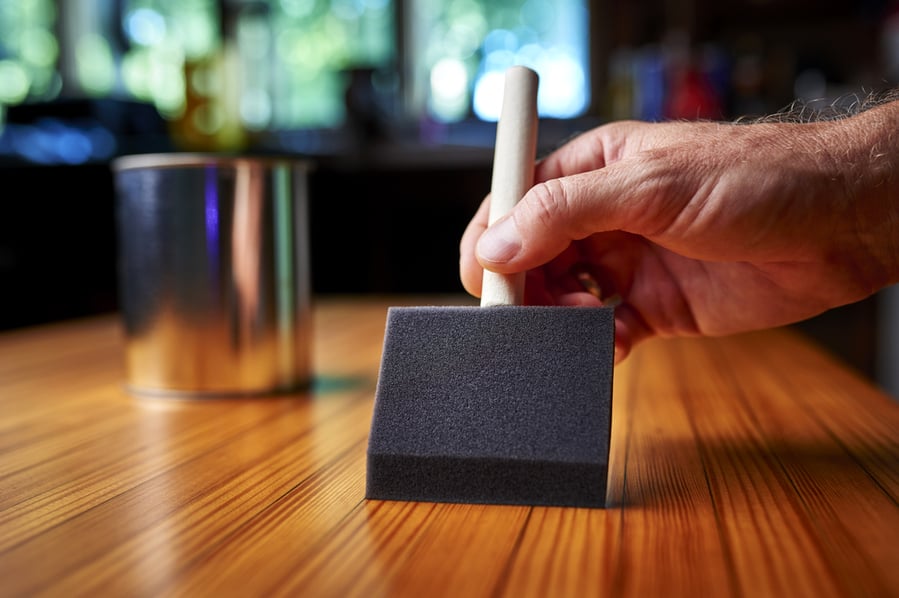
After allowing the paint to dry properly, apply a coat of polyurethane as a sealant. This will protect the coat of paint from scratches and UV.
Use a foam brush to apply the polyurethane to get a smooth consistency. Allow the sealant to dry, and you are done.
Tips To Clean Plywood Surface
Cleaning plywood with a good paint finish can be challenging as it can easily scratch.
Here are some tips to help you clean it with ease:
- Wipe dust with a microfiber cloth
- For unsealed surfaces, put dishwashing liquid on a soft dry rag and wipe and dry promptly.
- For stained surfaces, use a damp cloth.
- For painted surfaces, use dishwashing liquid to remove grease and stain.
Takeaway
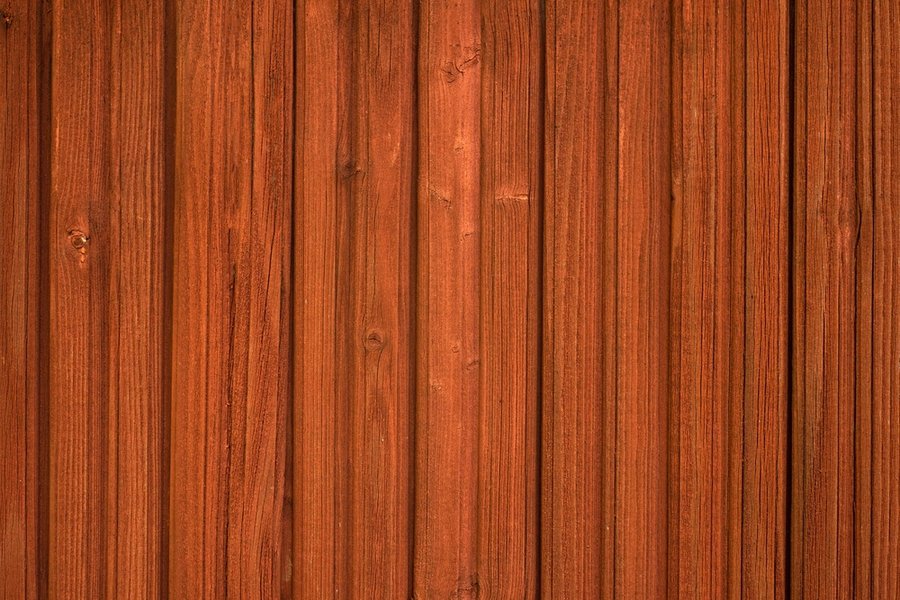
Conclusively, if you diligently follow the steps in this guide, you will always get a really good paint finish on plywood. Always choose a finish that best suit the project you are working on, and do not hesitate to ask the hardware store for advice.
The wood’s natural beauty is often enough to beautify your project, but you can always spice things up with different types of finish.
Frequently Asked Questions
Does Painting Plywood Make It Waterproof?
Painting plywood with standard paint like primer, undercoat, and gloss will make it waterproof. If the wood will be exposed to water frequently, then a sealer like a varnish is a good choice.
What Type of Plywood Is Best for Painting?
Premium veneers like maple and oak are great options. But these types of plywood will run up any budget. Alternatively, hardwood veneer plywood is an excellent option if you are budget-restrained.


